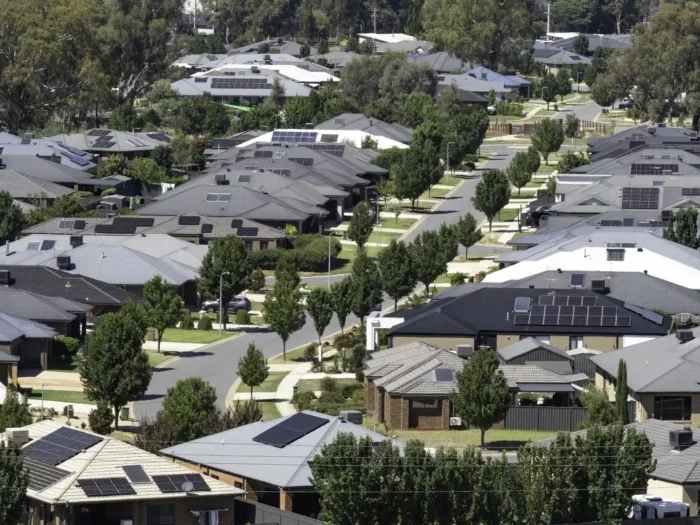Insights
5 reasons a positively geared property could suit you
Published
21 May, 2025

A positively geared property might sound too good to be true for some, when rental income exceeds your investment property’s outgoings. All the talk is usually on negative gearing, so while positively geared assets aren’t extremely common, especially in the early years of an investment, some investors find their financial position so strong that inevitably a positively geared property is what they’re left with.
There are benefits to a positively geared property. Not as many as a negatively geared one, given the taxable advantages of being able to reduce your declarable income. But if your debt levels are low (or you plan for them to be), there are a few reasons why your position with a positively geared property could be enviable.
What is positive gearing in property?
A positively geared property is one where the income it generates—usually from rent—is higher than the total ongoing costs, like:
- Interest repayments
- Council rates
- Water rates
- Property management
- Maintenance and improvement costs
- Building and landlord insurance
If your investment property brings in $600 a week in rent (around $31,200 a year), and your total annual expenses come to $26,000, that’s a net positive cash flow of $5,200—meaning the property is positively geared.
Positive Gearing vs Negative Gearing

The above example is different to negative gearing, where your expenses outweigh your rental income and you’re relying on capital growth and tax offsets to make up the difference. (Check out our rental yield calculator to know exactly what sort of returns your investment property owes you.)
Let’s compare both scenarios to get a better understanding of the difference:
Investor A buys a new property with mortgage repayments and expenses of $40,000 a year, earning $30,000 in rent. All things considered, that’s a $10,000 loss—making it negatively geared.
Investor B owns a property outright or has a small mortgage. It earns the same $30,000 in rent, but only has $20,000 in outgoings. That’s a $10,000 surplus—positively geared.
Negative gearing is often favoured for its tax deductions, as the associated negative cash flow can be used to offset other taxable earnings, such as income from salary, dividends, trust distributions and the like. But, of course, it requires investors to carry a loss and to carry debt which is presupposed to interest rate fluctuations. Certainly, though, this is the most common scenario in Australia, with only 32 per cent of home owners being mortgage free as of 2021.
Positive gearing, on the other hand, might give you a reliable income stream—if you’re in a position to make it work.
Positive Gearing vs Cash Flow Positive

A quick discernment of definitions. Although the terms are sometimes used interchangeably, there’s a subtle difference between positive gearing and cash flow positive.
A positively geared property is positive cash flow before tax—meaning it produces surplus income even without tax deductions.
A cash flow positive property might only show a surplus after tax benefits are factored in.
For example, if a property costs $35,000 a year to hold but only makes $32,000 in rent, it’s negatively geared. But if your taxable income drops due to deductions, you might end up cash flow positive once your accountant has pored over your tax return.
The benefits of positive gearing
Tax benefits still apply
Even if your property is making a profit, you can still deduct the associated expenses from your income. That includes interest, maintenance, depreciation and more. While it won’t create a loss to offset your taxable income like negative gearing does, it could still reduce your overall tax bill.
This is where real estate can be great, compared to many other investments. Its tangible aspect presents the obvious opportunity to make extra tax deductions from the falling value of fixtures and the building itself—something that can’t be done with, say, shares.
It might offer a passive income stream

Positive gearing could give you a tidy income buffer—whether you’re reinvesting, saving for another deposit or just easing the cost of living. If you’re semi-retired or scaling back work hours to focus on family time, that steady rental income might offer welcome peace of mind and portfolio diversification.
You might be less exposed to interest rate spikes
If your debt levels are low, you’re not as vulnerable to the kind of sharp interest rate increases we’ve seen in recent years (thankfully, they appear to be reversing, with our second interest rate drop now in the books for 2025).
That means less financial stress and less chance of needing to sell under pressure during a downturn. Downturns can create mortgage stress to those who are highly geared and heavily reliant on a salary from a challenged industry, so it’s a bonus for many if their leverage is reduced in those trying financial times.
The disadvantages of positively geared properties
While positive gearing sounds good on paper, it does come with trade-offs.
The main downside is greater tax obligations. Since you’re earning a profit, that income is taxable. Depending on your marginal tax rate, a portion of your surplus rent might end up with the ATO.
There’s also the risk that your property might not grow in value as much as one in a high-growth (and usually negatively geared) area. Capital growth tends to attract more attention from investors, but it’s a common perception that positively geared properties can often be situated in slower growth regions.
Should you positively gear your property?

Every decision you make on your property investment should be based on your financial position and your investment goals. Chat to your accountant before dumping a bunch of your savings on your investment property loan or finding a property that has far greater rental income than its adjacent debt.
If you’re in a position where your mortgage is significantly reduced, positive gearing might be a rewarding next step. But it won’t suit every investor or every stage of a portfolio. After all, the tax advantages of owning a property is one of the biggest reasons investors place real estate in their investment portfolio. And in Australia, unlike many other countries, there’s no cap to negative gearing, meaning those with healthy looking cash flow can capitalise greatly on a negatively geared property.
Perhaps consider calculating the negative gearing on your existing or prospective property—it might give you the perspective you need to help with your decision whether to positively or negatively gear your investment property.
Again, whether positive gearing is right for you comes down to the most important factor of all: your own financial position. Speak with your accountant or financial adviser to see how it fits into your broader goals.
Want relevant real estate news and views, delivered right to your inbox? Subscribe to receive our monthly newsletter. Every article is 100% free, and you’ll be joining +1,000 investors who’ve already made serious gains from leveraging our property nous.
We never spam you or share your information, and you can unsubscribe anytime.


